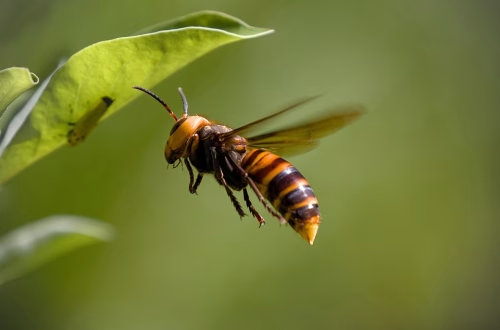Summary:
Crawl Space Pest Control is a critical aspect of home maintenance that directly impacts the health, safety, and structural integrity of your property. Crawl spaces are often overlooked, yet they are prime breeding grounds for pests like rodents, insects, and mold. Effective pest management in these areas involves identifying common pests, implementing preventative measures, and utilizing professional services when necessary. Homeowners and property managers must address these issues to avoid costly repairs, health hazards, and compliance violations. Understanding the importance of crawl space pest control ensures a healthier living environment and protects your investment in the long term.
What This Means for You:
- Regular inspections of your crawl space can prevent pest infestations before they escalate.
- Invest in preventative measures like sealing entry points and installing vapor barriers to deter pests.
- Choose a licensed pest control professional with experience in crawl space issues for effective solutions.
- Ignoring crawl space pest issues can lead to severe structural damage and health risks, so act promptly.
Crawl Space Pest Control Explained:
Crawl Space Pest Control refers to the specialized process of identifying, preventing, and eliminating pests in the crawl spaces of residential and commercial properties. Crawl spaces are often dark, damp, and secluded, making them ideal environments for pests such as rodents, termites, cockroaches, and mold. These pests can cause significant damage to the structure of a building and pose serious health risks to occupants. Proper pest control in crawl spaces involves a combination of inspection, prevention, and treatment strategies to ensure a safe and pest-free environment.
Effective crawl space pest control also includes addressing moisture issues, as excess humidity can attract pests and promote mold growth. By sealing entry points, installing vapor barriers, and maintaining proper ventilation, homeowners can create an inhospitable environment for pests. Professional pest control services are often necessary to handle severe infestations and ensure compliance with state and federal pest control regulations.
Types of Pest Issues:
Crawl spaces are vulnerable to a variety of pests, each posing unique challenges. Rodents, such as mice and rats, are common invaders that can chew through insulation, wiring, and wood, causing structural damage and fire hazards. Termites are another significant threat, as they feed on wood and can compromise the integrity of a building. Cockroaches and ants are also prevalent in crawl spaces, often entering homes in search of food and water.
In addition to these pests, crawl spaces are susceptible to mold and mildew due to high humidity levels. Mold not only damages building materials but also poses health risks, particularly for individuals with respiratory conditions. State and federal laws, such as those enforced by the Environmental Protection Agency (EPA), regulate the use of pesticides and require proper handling of mold remediation to ensure public safety. Understanding these pest issues is essential for effective crawl space pest control.
Common Pest Control Methods:
There are several effective methods for controlling pests in crawl spaces. One of the most important steps is sealing entry points, such as gaps around pipes, vents, and foundations, to prevent pests from entering the space. Installing vapor barriers can help reduce moisture levels, making the environment less attractive to pests. Regular inspections are crucial for early detection of pest activity and addressing issues before they escalate.
Chemical treatments, such as insecticides and rodenticides, are often used to eliminate existing infestations. However, these treatments must be applied by licensed professionals to ensure safety and compliance with regulations. Traps and bait stations can also be effective for controlling rodents and insects. Integrating these methods with preventative measures provides a comprehensive approach to crawl space pest control.
Risks and Consequences:
Failing to address pest issues in crawl spaces can lead to severe consequences for both the property and its occupants. Pests like termites and rodents can cause extensive structural damage, resulting in costly repairs. Rodents can also chew through electrical wiring, increasing the risk of fire. In addition to physical damage, pests pose health risks by spreading diseases and allergens.
Mold growth in crawl spaces can exacerbate respiratory issues and cause allergic reactions. Excess moisture from mold can also weaken building materials, further compromising the structure. Ignoring these issues can lead to compliance violations and legal liabilities, as state and federal regulations require proper pest control and mold remediation. Addressing crawl space pest issues promptly is essential for maintaining a safe and healthy environment.
Choosing a Pest Control Service:
Selecting the right pest control service is critical for effective crawl space pest control. Look for licensed professionals with specialized experience in handling crawl space issues. A reputable service will conduct a thorough inspection, identify the type of pests present, and develop a customized treatment plan. Ensure the company follows state and federal regulations for pesticide use and mold remediation.
Customer reviews and referrals can provide valuable insights into the reliability and effectiveness of a pest control service. Ask about the methods and products they use, as well as any preventative measures they recommend. Choosing a knowledgeable and experienced pest control provider ensures long-term solutions and peace of mind.
People Also Ask About:
- What are the signs of pests in crawl spaces? Common signs include droppings, chewed materials, nests, and unusual odors. Inspecting crawl spaces regularly can help identify these indicators early.
- Can I handle crawl space pest control myself? While DIY methods like sealing entry points and setting traps can help, severe infestations require professional intervention for effective and safe treatment.
- How often should crawl spaces be inspected? Crawl spaces should be inspected at least once a year, or more frequently in areas prone to pests or high humidity.
- What is the cost of crawl space pest control? Costs vary depending on the extent of the infestation and the methods used. Professional services typically range from $200 to $1,500.
- Are pesticides safe for crawl space pest control? When applied by licensed professionals, pesticides are safe and effective. However, improper use can pose health risks, so always follow guidelines.
Expert Opinion:
Crawl space pest control is essential for maintaining the structural integrity and health of a property. Experts emphasize the importance of proactive measures, such as sealing entry points and controlling moisture levels, to prevent infestations. Addressing pest issues promptly with professional help ensures compliance with regulations and minimizes risks to occupants. Homeowners should prioritize regular inspections and preventative maintenance to safeguard their investment.
Related Key Terms:
- Crawl space pest control services near me
- Termite treatment for crawl spaces
- Rodent removal in crawl spaces
- Mold remediation in crawl spaces
- Crawl space vapor barrier installation
- DIY crawl space pest control
- Professional pest inspection for crawl spaces
Pest Control Disclaimer
This content is for educational purposes only and does not replace professional pest inspection, treatment, or safety advice. Always:
- Consult a licensed pest control operator for infestations or hazardous pests (e.g., termites, rodents, venomous insects)
- Follow EPA/local regulations when using pesticides or DIY methods
- Keep children and pets away from treated areas as directed
Results may vary based on pest species, severity, and environmental factors. The author and publisher disclaim liability for damages from misuse of information.
*Featured image sourced by Pixabay.com




